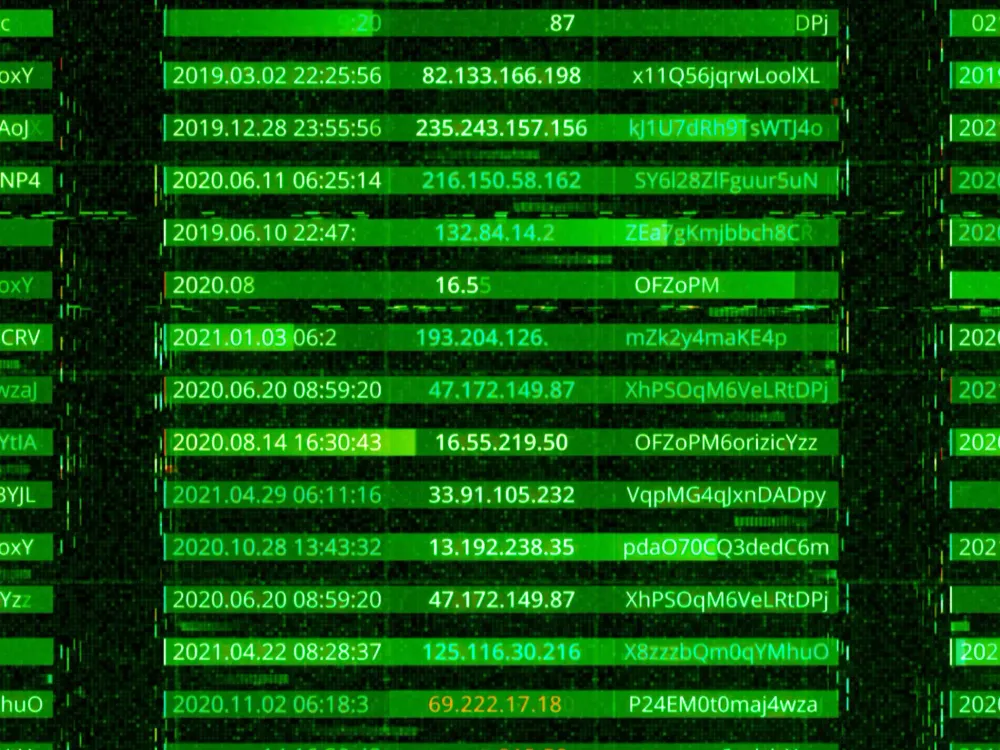
A screen with a multitude of IP addresses
Dynamic vs. Static IP Addresses: Which is More Secure for Enterprises?
In an increasingly connected world, where cyber threats are a constant concern, protecting your business network is more important than ever. One critical decision that impacts network security is choosing between dynamic and static IP addresses.However, this decision could have a huge impact on organizational protection against cyber threats, although it is quite insignificant in most cases. Here is a comparative discussion that anyone can make by reading this article: which is better to be more secure for your enterprise: dynamic or static IP address?
Understanding IP Addresses
IP addresses are a set of numbers that are assigned with devices which are connected to a network. They enable devices to be found and communicate with one another. In most cases, IP addresses are classified among two categories, and they are dynamic and static.
To further enhance the security and integrity of your online presence, it is crucial to implement an online brand protection monitoring solution. This solution actively monitors IP addresses, domain names, and other digital assets to detect and mitigate potential threats such as phishing, impersonation, and counterfeit activities. By leveraging an online brand protection monitoring solution, businesses can safeguard their brand reputation and prevent unauthorized use of their identity.
It is a type of IP addressing which is assigned dynamically from where the device is located and it varies in some time intervals. Static IP addresses are also used but their ranges are fixed as they do not change their address. Evidently, each type has its benefits and drawbacks, especially in terms of security.
Dynamic IP Addresses: An Overview
Dynamic IP address usually refers to a type of addressing scheme wherein the IPs are assigned by the Dynamic Host Configuration Protocol (DHCP) server. This server works in a way that it allocates IP addresses to the hosts from a pool practice that will help to fill resources that are available in the network.
On this note, one significant benefit of dynamic IP addresses is that they could be inexpensive to acquire. The dynamic or temporary addresses are given out randomly; therefore, the enterprises do not require the purchase of bulk IP address space. This can go a long way to controlling expenses especially for those large organizations that use lots of cash in the services.
Therefore, from a security standpoint, dynamic IP addresses are more advantageous. Given that these addresses are dynamic, often changing with time, it becomes relatively harder for the attackers to target particular devices. This constant change disorients the attackers as there becomes a constantly changing goal, meaning that specific types of attacks may be discouraged.
Security Benefits of Dynamic IP Addresses
There are several security advantages to a technology as basic as having a dynamic IP address: its main advantage being that it is variable. Since the targeting IP address of a device is constantly changing, it is harder for hackers to perform focused attacks such as DDoS attacks. In these forms of attacks, the attackers keep on using the same IP addresses to flood the targeted device with traffic.
Moreover, with dynamic IP addresses one can reduce the vulnerability to IP spoofing. IP spoofing turns an attacker’s IP address into that of an authorized user, a feature that makes it devastating when implemented. But, where dynamic IP addresses are concerned, flows weave fascinating tapestry since the patterns are not set and predictable and thus, it becomes more challenging to harness legitimate-sounding address space.
Statistics indicate that enterprises utilizing dynamic IP addressing experience fewer targeted attacks. According to a report by Cybersecurity Ventures, organizations using dynamic IP addresses saw a 20% reduction in DDoS attacks compared to those with static IPs. Enterprises can also use free IP address lookup tools to monitor and verify the source of traffic, further enhancing security.
Static IP Addresses: An Overview
Static IP addresses are constant and are good for devices which need a permanent connection. For instance, servers, printers, and several other network interfaces and hardware components need static IP addresses.
Another advantage of using static IP addresses is that they are not subjected to change as they are dynamic. Using a static IP address is important for services that require to be online constantly for example web server, email server . This reliability can further improve processes of functionality and usability particularly where clients are involved.
Unfortunately, some drawbacks arise from the concept of having static IP addresses as well. When these addresses are used, they remain constant and this means that the attackers can easily predict them. Once the IP address is singled out this can be attacked over and over again augmenting the risk of breaches.
Security Challenges of Static IP Addresses
Because static addresses are used and the hosts employing these addresses remain constant, they may easily be attacked. Unlike Dynamic IP addresses that are constantly changing and therefore difficult for cybercriminals to use in launching attacks, Static IP addresses remain constant and thus they are constantly at risk of being targeted. For example, static IP addresses are more vulnerable to IP address hacking where the attackers compromise on physical addresses or control values.
Another considerable threat inherent in a distributed system is the possibility to hit a site by a Distributed Denial of Service attack. As once allocated, static IP addresses never change, the attackers can continuously perform DDoS attacks over and over again thereby flooding the network and disrupting services. One disadvantage of the static IPs is the fact that they are easily predictable for an attacker, meaning the targets are easier to predetermine and plan for by the attacker.
Mitigating Risks with Static IP Addresses
Nevertheless, getting the static IP address can be protected by implementing the right measures currently in place. This is why it is important to ensure effective implementation of the firewall rules. There are methods of how firewalls can accept only the traffic originating from the certain IPs, which are safe to be trusted.
Another useful method is the VPNs usage. By using a VPN, it is possible to hide the real IP address of a device in an attempt at increasing security. This can help to diminish a possibility to predict and attack the statically configured IP addresses.
Security measures should be assessed in a continuing manner and updated frequently. Organizations should periodically analyze network traffic and act accordingly by adjusting their protection mechanism. Another important aspect of free IP address services is to track down and to check out the given IP for suspicious activity. A research carried out by Palo Alto Networks reveals that organizations that revise their security measures stand to cut down on breaches by a margin of forty percent.
Conclusion: Making the Right Choice
Dynamic and static IP addressing are two options that enterprises have to choose from when engaging in computer networks and the choice depends on the needs and security measures that an enterprise has. Dynamic IP addresses are relatively secure due to the constant change in the addresses assigned to a given device; it is ideal for almost all devices that are not needed to connect frequently and continuously.
While the usage of static IP addresses may be more dangerous in terms of security issues, these addresses are necessary for enabling the stability of significant infrastructure. In the present context, it is noteworthy to state that the apparent threats of imposing static IP addresses can easily be offset by top-notch security measures.
In the end, the choice is based on balancing the need for accessibility with the need for security. Enterprises should classify their network infrastructure, identify potential vulnerabilities, and choose the IP addressing scheme that best fits their operational and security needs.


